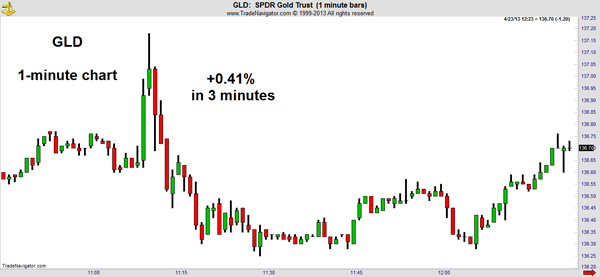Three Reasons Why Japanese Yen ETFs Are Headed For A Crash
Post on: 21 Июнь, 2015 No Comment

With ongoing weakness in Europe pushing the euro to double digit losses against major rival currencies this year, many investors have sought out safe havens such as the U.S. dollar to ride out the storm. The presence of general economic uncertainty has sent the greenback sharply higher against virtually every major currency year-to-date. However, a few countries have seen currencies rise against the dollar despite the obvious appeal of the U.S. currency in tumultuous environments. One of these is Japan, as the yen has proven to be stubbornly strong despite implementation of policies designed to weaken the currency [also see Top Performing Currency ETFs From The First Half Of The Year ].
A perfect storm over the past few months has helped send the value of the yen higher as many other currencies have plunged. One of the most important factors in the recent rise is the unwinding of the carry trade in which investors would borrow in low yielding currencies (such as the yen) and buy into higher yielding ones (such as the Australian dollar or even the euro). However, as interest rates have converged and loan losses build up at banks around the world, this once profitable trading strategy becomes unsustainable, forcing many to buy back yen in order to unwind their trades. Another reason for the relative strength of the Japanese yen as of late is the rock-solid balance sheets that many Japanese banks currently maintain, a fact that has helped the country to avoid the worst of the recent financial crisis [also Definitive Guide To Japanese Yen ETF Investing ].
Currently there are five ETFs tracking the Japanese yen. but only two have market capitalization levels over $100 million and average volume of more than 10,000 shares a day. These two funds, the CurrencyShares Japanese Yen Trust (FXY ) and the ProShares UltraShort Yen (YCS ), track different sides of the trade; FXY focuses on the long side while YCS providing investors with a leveraged play on the short side of the yen. Not surprisingly, FXY has drastically outperformed YCS thus far in 2010, posting a gain of about 5% compared to an 11% loss for YCS.
Despite these recent gains, many analysts believe the Japanese currency could be headed for a reversal in the not-so-distant future. Below, we profile three reasons why the yen may reverse course in the second half of 2010 [also read Japan ETFs In Focus ].
1. Ultra-low Rates
Japan currently has key interest rates set at 0.1%, and is also experiencing deflation of close to 1% a year. That makes interest rate hikes very unlikely, and puts the yen in a tough spot. Other countries will begin to raise rates in order to combat inflation, while Japan is likely to continue to keep rates at an extremely low level. This could spur a return to the carry trade in which investors will resume borrowing yen to buy assets in other currencies. Once this happens, the money supply could sharply increase, which would put significant downward pressure on the value of the yen in the medium-term [for more on inflation see Beyond TIP: 10 ETFs To Protect Against Inflation ].
2. Low Growth
Japan has been a slowly growing economy since its property bubble burst in the early 90s. While most western nations grew quickly in the 90s, Japan was only able to muster expansion of 1% a year and has been stuck in a lost decade ever since. Although growth levels have rebounded latelythree of the last four quarters saw GDP growth of more than 4.5% this comes after an extremely weak period in 2008 and 2009 in which the economy fell by more than 4% a quarter for a year (including an annualized drop of 9.6% in the first quarter of 2010, and a 15.8% drop in the second quarter). With such a sharp downturn and a shrinking population, it is hard to imagine the Japanese economy growing its way back to prosperity, which could hurt the currency in the near-term [also see Japan’s Currency Woes Put Yen ETFs In Focus ].
3. Mounting Debt
The biggest problem that is likely to plague the Japanese currency is the extremely high level of debt that the country currently maintains. By some estimates, the debt-to-GDP ratio for Japan is expected to rise to 197%. a level that will greatly restrict the ability of the government to print more currency without causing significant economic problems. This trend is especially troubling given the demographic situation in Japan; the population is rapidly aging, forcing many to cash in their bonds in order to pay for retirement and other expenses. This will make it more difficult for Japan to sell bonds to its own citizens, which currently buy up more than 90% of the market. Because foreign investors would likely demand significantly higher interest rates than Japanese citizens, issuing bonds outside of Japan isnt an attractive option [see Three Country ETFs With Low Debt-To-GDP ].














